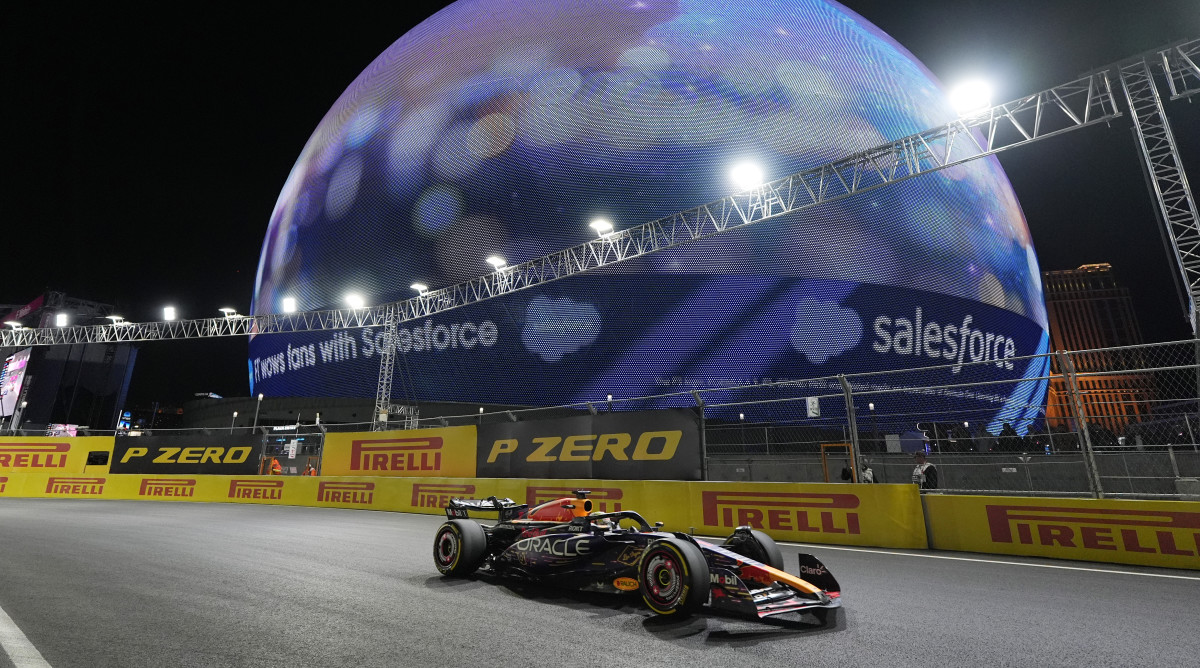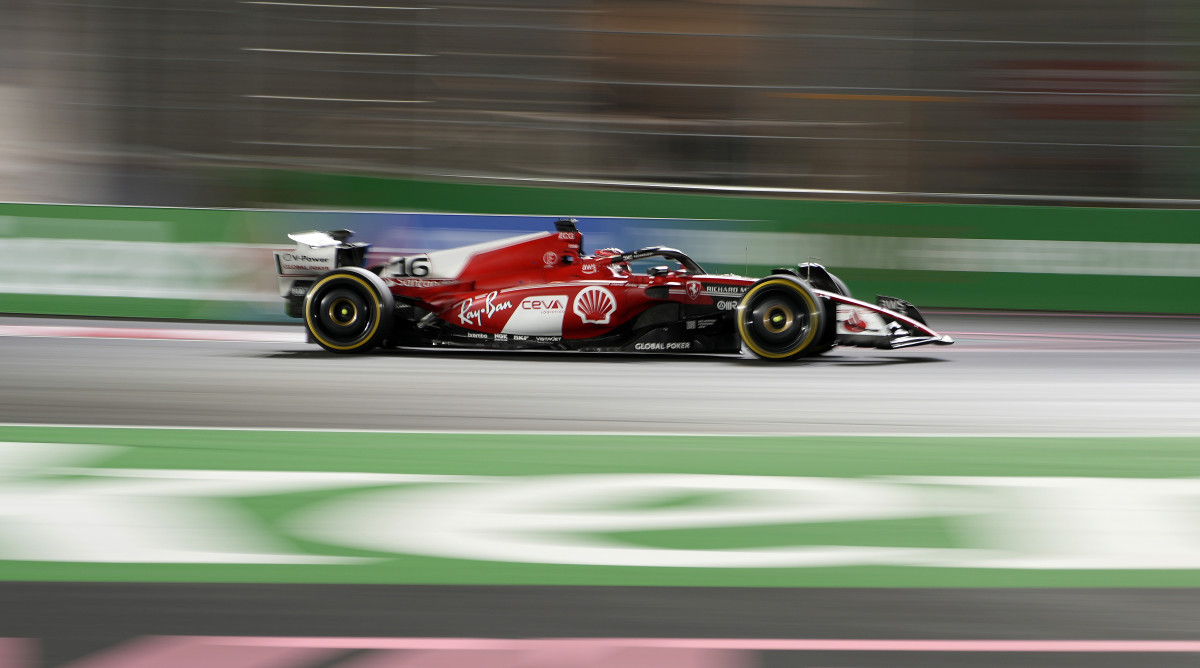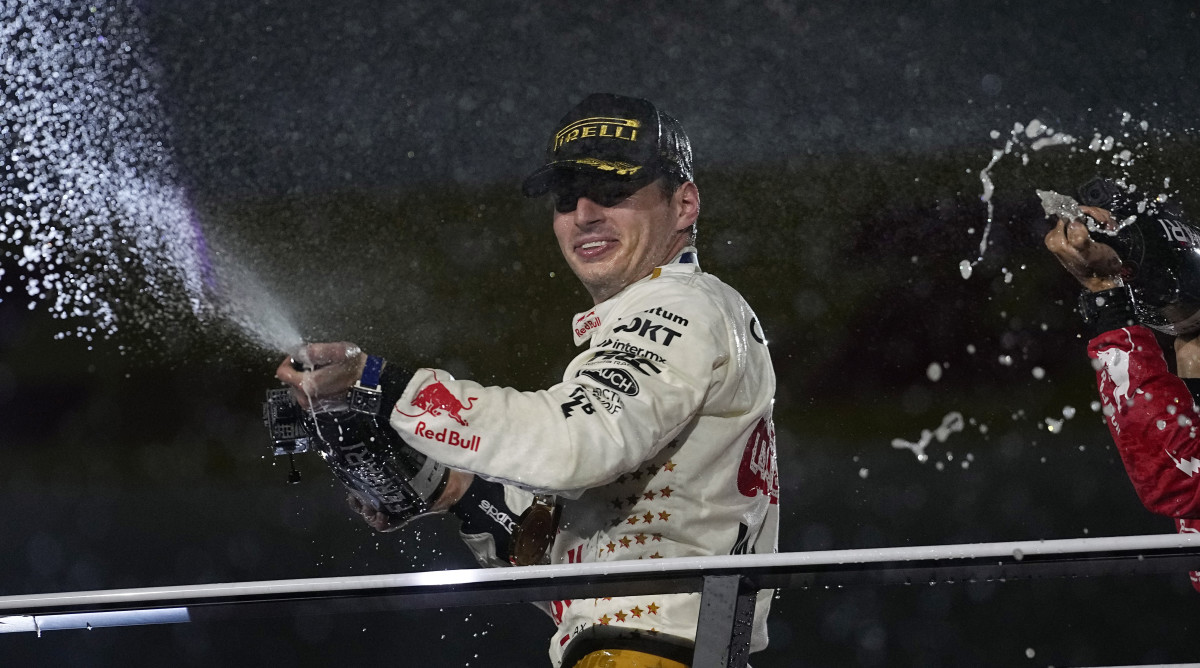Five Takeaways From the Inaugural Las Vegas Grand Prix
A few days have passed since Formula One took over Las Vegas. Although the championship raced in Sin City before—twice in the early 1980s—this time was different and was one of the most anticipated sporting events of the year. There was a lot on the line, with F1’s owners Liberty Media investing almost half a billion into the race, but did it live up to the hype? Let’s break down the inaugural Las Vegas Grand Prix.

Things got off to a bumpy start in practice
The countdown for the Las Vegas Grand Prix started in March 2022 when F1 announced the city was returning to the calendar. So, when things came to an abrupt end just eight minutes into the first practice session, there was some serious disappointment. While drivers were getting their first taste of the new 6.2km track, Ferrari’s Carlos Sainz drove over a drain cover in the middle of the circuit, which obliterated his car. Due to the ridiculous downforce F1 cars generate, the metal guard was sucked up by Sainz, tore through parts of his Ferrari and sent sparks everywhere. These things can happen if the drain covers are not securely fastened, although it is quite rare.
Realizing the severity of the situation, a decision was made not to resume the first practice and inspections were made on all other drains across the circuit. It’s understood the majority of them needed to be amended, with sand and asphalt being poured around them to hold them down—a process that took five hours from diagnosis to solution.
This meant the second practice was delayed, and instead of starting at midnight local time action resumed from 2:30 to 4 a.m. Las Vegas is often known for its nightlife, but this was something not quite seen before. Fans were removed from grandstands and hospitality, and told to go home early so they weren’t able to see any of the late night practice, which has brought about a class-action lawsuit by those who had purchased tickets for the practice.
Sainz was also handed a 10-place grid penalty for having to change so many elements on his car, going over his allocated amount for the season. Ferrari was understandably angry at this decision, especially as it deemed the drain cover incident was out of the team’s control, but F1’s governing body, the FIA, said it could only follow what the regulations said to do with no exceptions allowed to be made.
A crazy qualifying showed the potential of reverse grids
With Las Vegas being a completely new circuit, all drivers started on fairly similar ground. They’d experimented with the circuit on simulators, but nobody had driven the track before the first practice got underway Thursday evening. There were hints as to who could perform well thanks to the circuit’s characteristics, with Ferrari being a quiet favorite but not many could have predicted such a dramatic shake up for qualifying.
Charles Leclerc didn’t buckle under pressure, popping his Ferrari on pole position for the 23rd time in his F1 career. Yet it was Max Verstappen who started alongside him on the front row after Sainz took his penalty. Mercedes driver George Russell lined up in third with fourth taken by Alpine’s Pierre Gasly, achieving his best grid slot for the season and the best for the team since Esteban Ocon lined up in third for May’s Monaco GP.
Behind him was a Williams Racing third row lockout, with Alexander Albon and American Logan Sargeant locking in an incredible result. Appearances from Alfa Romeo’s Valtteri Bottas in seventh and Kevin Magnussen of Haas in eighth gave a real mix-up to what we usually see.
Lewis Hamilton of Mercedes and Sergio Perez of Red Bull were also knocked out in Q2, and were forced to fight their way through the pack the following day.
With so many fans desperately calling for reverse grids to spice up the F1 Sprint format in 2024, this result almost showed us what could happen if we flipped the order to make things more challenging and give the midfield and back runners a chance further up the grid. The result was a great race, and some bold and brave overtakes rather than watch the five lights go out and see Verstappen drive off into the distance yet again.

It was one of the best races of the season
As mentioned, F1 has been building up excitement for more than a year. We all knew that F1 would go hard on the advertisement, and make this both a sporting and entertaining spectacle for the masses. However, the event was met with plenty of skepticism, with people worried the championship was drifting away from pure unfiltered racing and instead selling its soul for the show.
However, thanks to a variety of factors, the actual race was a success. The low-grip nature of the track proved a tough but rewarding challenge, and overtakes were plentiful with 82 recorded over the race distance—the second-highest total of the season behind Zandvoort. There was a wicked fight for the lead, high speeds that looked epic both in person and on screen, and a lack of data for teams leading to gambles on car setups and strategy calls. The U.S. TV numbers were strong too, with it being the third most-watched race of the year despite awkward timings for the East Coast.
There has been a theme in recent years for new additions to the calendar, albeit it mainly negative. Perhaps it’s to do with the fact F1 is adding more and more events to the schedule despite desperate pleas from those within the sport to reign it back with a record-breaking 24 races expected next year. But looking back at other introductions such as Azerbaijan, which was met with significant skepticism, it managed to convert fans into not judging a book by its cover.
There’s still a lot for F1 to learn from Las Vegas
Ending on a high note is all F1 could have asked for after a turbulent first addition of this new Vegas race. Although the weekend had its moments—some better than others—it left a generally pleasant taste in the mouths for racing fans.
There is a fine line when it comes to keeping fans happy and embracing the entertainment aspects of motorsport. Wednesday night was host to an opening ceremony, which included musical performances from the likes of Kylie Minogue, Journey and John Legend. Drivers also made a brief appearance, being sent up in elevators to wave to the crowd before being sent back down only moments later in a scene fans were quick to compare to The Hunger Games. The reigning world champion Verstappen was also pretty critical over the weekend, telling the media the event was “99% show, and 1% sport,” as well as comparing it to soccer leagues claiming “Monaco is Champions League and this is National League.” He also described feeling like a “clown” during the opening ceremony earlier in the week. However, several drivers, including seven-time champ Hamilton, embraced it all over the unique weekend.
So, what could be improved over the next nine years remaining on the contract? Well one of the most glaring issues came from the grandstands—they were half empty. From where I watched qualifying Saturday, more than half the seats were deserted yet there was no lack of F1 fans in Las Vegas as they packed out casinos and watch parties away from the track. Ticket pricing needs to be looked at as a matter of urgency and make it accessible not just for the international audience, but for locals, too.
Although Saturday’s race might influence how many tickets are sold for next year’s event, there should have been excitement and anticipation for the first event of its kind—yet the seats remained empty. Hospitality packages seemed to do well, with The Venetian giving guests a great view of the race on the iconic Strip as well as five-star service with food from locations like WAKUDA, a restaurant in the hotel owned by Chef Tetsuya Wakuda, who has two Michelin stars. The F1 Experiences Lounge also boasted an enthusiastic crowd, which was able to witness cars speeding past on their way to the Sphere. From those I spoke to, it sounded like fans were happy to invest a little more into having comforts and catering throughout these late nights than sitting in a cold and uncovered grandstand for the evening.
Timing could perhaps have an overview, although this is not as simple as it sounds. A 10 p.m. start time was the latest an F1 race has ever gotten underway, and of course it wasn’t on the schedule to be practicing in the entertainment capital of the world 3 a.m. Road closures are far from ideal and timings need to be suitable both for F1 and local businesses and residents.
With awkward scheduling not just in Vegas, but the East Coast and most of Europe as well as drivers and teams calling for earlier starts, Liberty Media might need to have an evaluation for next season and beyond.

Max Verstappen is still making and breaking records
He might have started by slating the event, but the 26-year-old was soon celebrating when he crossed the checkered flag to win his 18th race of the year. This victory means he’s now won 16 of the last 17 Grand Prix and has continued to extend his own record of most wins in a single season. But the stats don’t end there. Verstappen also achieved his 20th podium of the year—another record of his own that he smashed—and became the first driver to win three separate Grand Prix in the same country over a season, finishing first in Miami and Austin this year too.
His incredible run also ties him with four-time world champion, Sebastian Vettel on 53 wins. Vettel, who bid an emotional goodbye to F1 and retired at the end of last season, sat third in the all-time winners list. It seems inevitable that Verstappen will surpass Vettel’s record, and could even do so in Abu Dhabi this weekend for the final race of the season. If Verstappen manages to accomplish that, he has only two other drivers with more victories than him: Michael Schumacher with 91 and Hamilton with 103.
